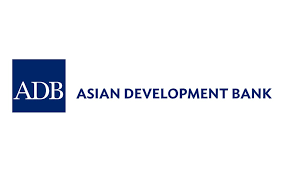The Asian Development Bank (ADB), long regarded as a meticulous and prudent lender of mostly Asian governments, is facing intense scrutiny over its oversight in the controversial airport fee hikes.
This, after President Ferdinand “Bongbong” Marcos, Jr. reportedly became “very angry” at the move, which had not passed through the Cabinet for approval.
A source told news website Bilyonaryo that industry stakeholders are asking why ADB– the Department of Transportation's partner, consultant and adviser for the terms of reference in the bidding for the Ninoy Aquino International Airport (NAIA) rehabilitation– signed off on holding only one public consultation to discuss the significant increase in airport fees which could have an adverse impact on the country's tourism and trade.
The DOTr held its only consultation on February 12, 2024, two months after the higher rates were already included in the Bid Bulletin circulated to potential bidders for the NAIA rehabilitation project, Bilyonaryo reported.
By that time, the fee increases were essentially finalized, with bids submitted on December 27.
Shortcomings
Despite ADB’s request to extend the bidding deadline to January 29 to attract more competitive offers, the DOTr reportedly did not comply.
During the consultation, stakeholders were left with unanswered questions due to the unavailability of the concession agreement and the confidential nature of the consultant’s data.
Just four days after the hearing, the DOTr awarded the project to a consortium led by San Miguel Corp., which offered to give 82 percent of airport revenues to the government.
At a follow-up meeting in May, stakeholders challenged the baseline airfare data presented by the ADB, which was used to justify the P1,000 increase in fees.
The ADB claimed the average airfare was P48,000, but stakeholders, citing industry data, argued the actual average was significantly lower at P23,776.
Both the ADB and DOTr have defended the sharp fee hike, noting that airport fees have remained unchanged since 2000.
Discouraging non-travelers?
In a similar development, Transportation Secretary Jaime Bautista said he is aware that the new parking rates imposed by the new NAIA Infra Corp. (NNIC) will discourage nontravelers from using the airport parking lot meant for passengers.
“If you look at it, the regular rates are not that high. Those who complain are those who used it for overnight parking. The airport [parking lot] should not be used for overnight parking. It is supposed to be for the passengers,” Bautista was quoted by Business Mirror.
Effective October 1, NNIC imposed a minimal increase to P50 from P40 for the first two hours of parking. However, for overnight and extended parking, a 24-hour stay will now cost P1,200 for cars, P480 for motorcycles and P2,400 for buses from the old rate of P300 for all vehicles.
The new rates have been significantly increased to discourage the use of the premier airport as a long-term parking facility.
Also, it aims to optimize parking facilities by prioritizing parking for passengers.
These adjustments, the first in over a decade, are in line with Manila International Airport Authority Administrative Order 1 series of 2024 and approved through Cabinet Resolution 1, series of 2024.
This order, issued by the Manila International Airport Authority (MIAA) before NNIC assumed airport operations, is the result of a comprehensive review of fees for various regulated airport services.
NNIC said previous parking rates unintentionally encouraged misuse of the airport’s limited parking spaces.
Many individuals, including those from nearby establishments and with no airport-related business, were taking advantage of the low rates for overnight or long-term parking.
This created parking shortage for actual passengers, adding to congestion and frustration.
The new rates will not only prioritize passengers but also reduce congestion and improve efficiency, NNIC said.
“The goal is to optimize parking for our passengers. While the previous rates may have been convenient for some, they created significant disadvantages for travelers. We believe these changes will create a more efficient and passenger-friendly airport experience,” NNIC said.
#WeTakeAStand #OpinYon #OpinYonStories #NNIC #MIAA #ADB #DOTr
